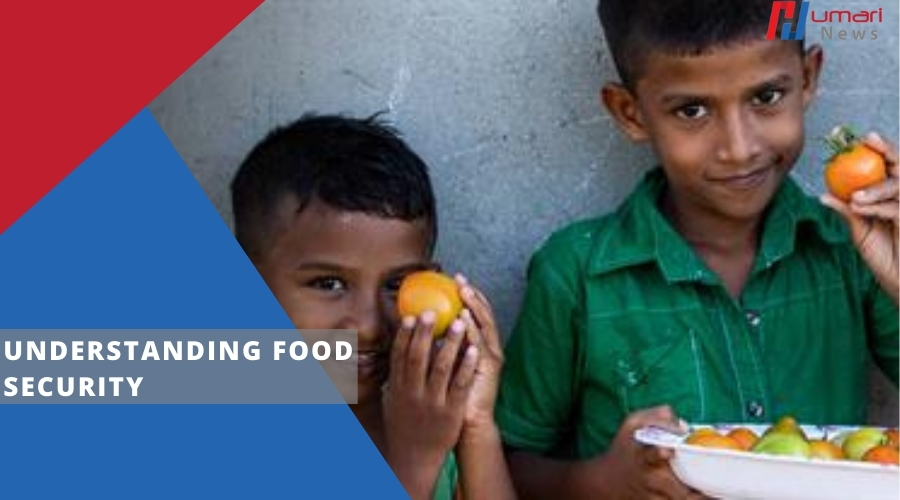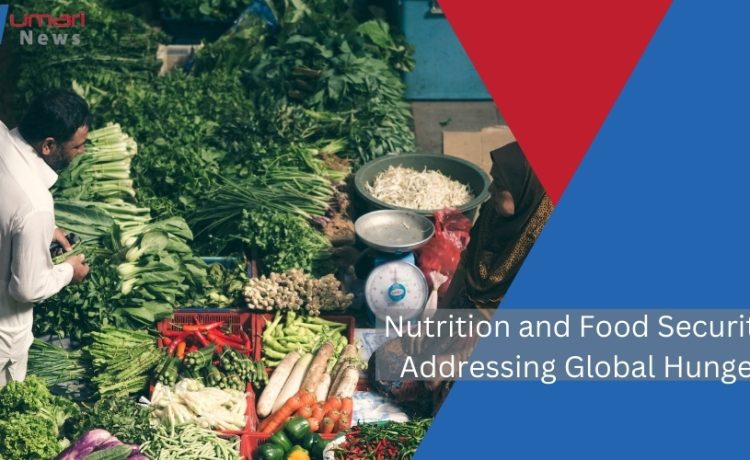Nutrition and food security are critical components of global health and well-being. Despite advances in agricultural productivity and food distribution, millions of people around the world still face hunger and malnutrition.
The dual challenges of ensuring sufficient food availability and providing nutritious options are central to achieving food security and improving public health.
This article explores the complexities of nutrition and food security, the factors contributing to global hunger, and potential solutions to address these pressing issues.
Understanding Food Security

Nutrition and food security is defined as a condition in which all people have physical, social, and economic access to sufficient, safe, and nutritious food to meet their dietary needs for an active and healthy life. The Food and Agriculture Organization (FAO) outlines four key dimensions of food security:
- Availability: This refers to the supply of food produced through domestic production, imports, and food aid.
- Access: This dimension focuses on individuals’ ability to obtain sufficient food, which is influenced by income levels, food prices, and social stability.
- Utilization: This involves the proper biological use of food, requiring knowledge about nutrition and health, as well as access to clean water and sanitation.
- Stability: Food security must be stable over time, ensuring that individuals have access to food even during times of crisis, such as natural disasters or economic downturns.
The Global Hunger Crisis
Despite progress in reducing hunger over the past few decades, the world is currently facing a resurgence of food insecurity. According to the FAO, nearly 828 million people were undernourished in 2021, with millions more facing hidden hunger due to micronutrient deficiencies. Several factors contribute to this crisis:
- Conflict and Instability: Armed conflicts and political instability disrupt food production, displaced populations, and hinder access to food. Regions experiencing conflict often face severe food shortages and malnutrition, as seen in countries like Yemen and South Sudan.
- Climate Change: Increasingly erratic weather patterns, rising temperatures, and extreme weather events such as droughts and floods have a profound impact on agricultural productivity. Smallholder farmers, who constitute a significant portion of global food producers, are particularly vulnerable to the effects of climate change.
- Economic Disparities: Economic inequality exacerbates food insecurity. In many low- and middle-income countries, people struggle to afford nutritious food due to high prices and limited income. Global economic shocks, such as those caused by the COVID-19 pandemic, have further intensified these challenges.
- Supply Chain Disruptions: The pandemic highlighted vulnerabilities in global food supply chains. Lockdowns, transportation restrictions, and labor shortages affected food distribution, leading to increased food waste and reduced access for vulnerable populations.
Addressing Global Hunger: Potential Solutions
- Promoting Sustainable Agriculture: Transitioning to sustainable agricultural practices can enhance food production while protecting the environment. Techniques such as agroecology, crop diversification, and sustainable water management can improve yields and resilience against climate change.
- Investing in Nutrition: Programs that prioritize nutrition education and awareness are essential for improving health outcomes. Governments and organizations must focus on promoting balanced diets, addressing malnutrition, and ensuring access to nutritious food for all, especially vulnerable groups such as children and pregnant women.
- Strengthening Local Food Systems: Supporting local farmers and food producers can enhance food security. By investing in local food systems, communities can increase their self-sufficiency, reduce dependence on imports, and improve access to fresh, nutritious food.
- International Cooperation: Addressing global hunger requires coordinated efforts at the international level. Governments, NGOs, and international organizations must collaborate to share resources, expertise, and technology. Initiatives like the Zero Hunger Challenge aim to mobilize global action to eliminate hunger and improve nutrition by 2030.
- Emergency Relief and Resilience Building: During times of crisis, providing immediate food aid and assistance is vital. However, long-term resilience building is equally important. Investing in infrastructure, education, and social protection programs can help communities prepare for and respond to future shocks.
Conclusion
Nutrition and food security are critical challenges that demand urgent attention and coordinated action. With millions still suffering from hunger and malnutrition, it is essential to implement sustainable solutions that address the root causes of food insecurity.
By promoting sustainable agriculture, investing in nutrition, strengthening local food systems, and fostering international cooperation, we can create a world where everyone has access to sufficient, safe, and nutritious food. Addressing global hunger is not just a moral imperative; it is essential for fostering a healthier, more resilient, and equitable future for all.







